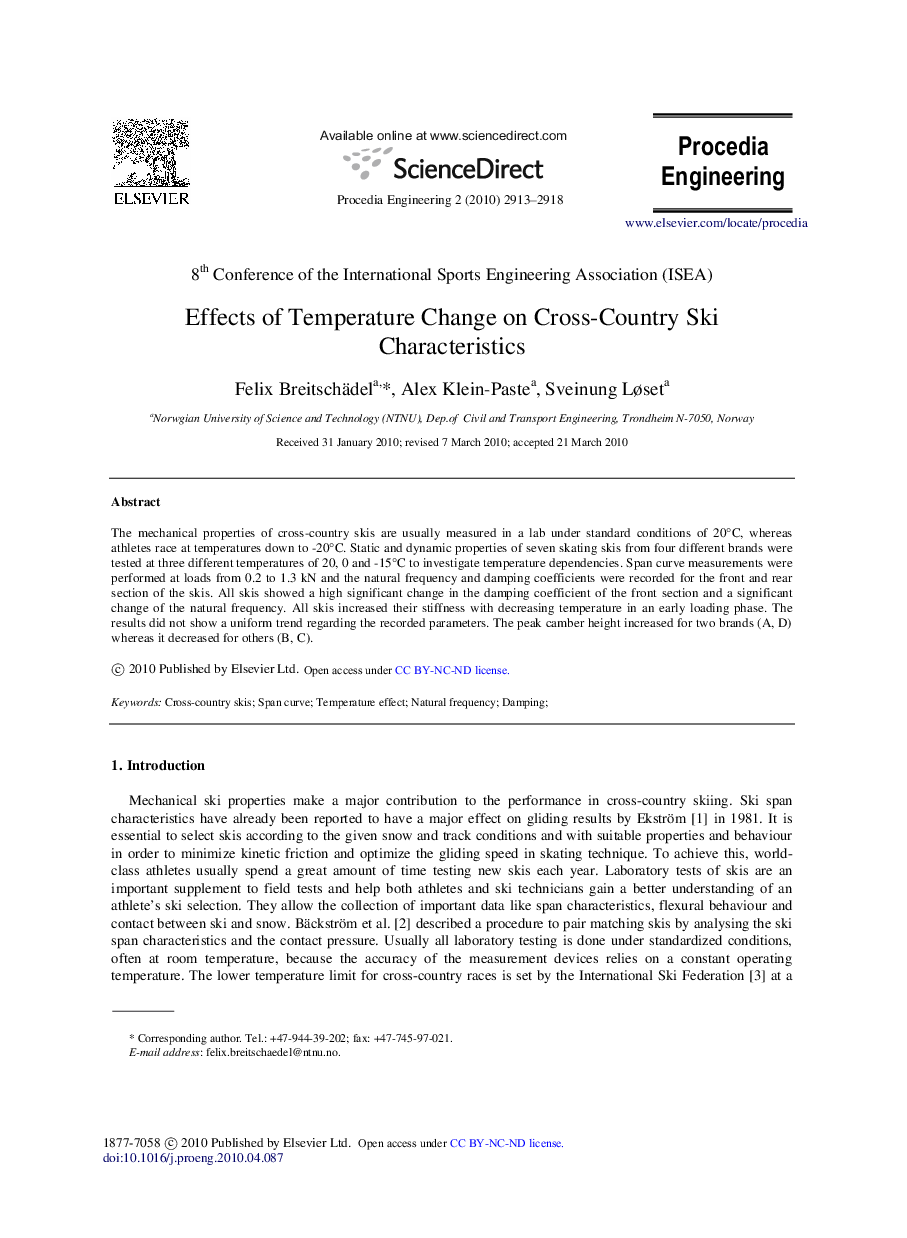| Article ID | Journal | Published Year | Pages | File Type |
|---|---|---|---|---|
| 864518 | Procedia Engineering | 2010 | 6 Pages |
The mechanical properties of cross-country skis are usually measured in a lab under standard conditions of 20 °C, whereas athletes race at temperatures down to −20 °C. Static and dynamic properties of seven skating skis from four different brands were tested at three different temperatures of 20, 0 and −15 °C to investigate temperature dependencies. Span curve measurements were performed at loads from 0.2 to 1.3 kN and the natural frequency and damping coefficients were recorded for the front and rear section of the skis. All skis showed a high significant change in the damping coefficient of the front section and a significant change of the natural frequency. All skis increased their stiffness with decreasing temperature in an early loading phase. The results did not show a uniform trend regarding the recorded parameters. The peak camber height increased for two brands (A, D) whereas it decreased for others (B, C).
